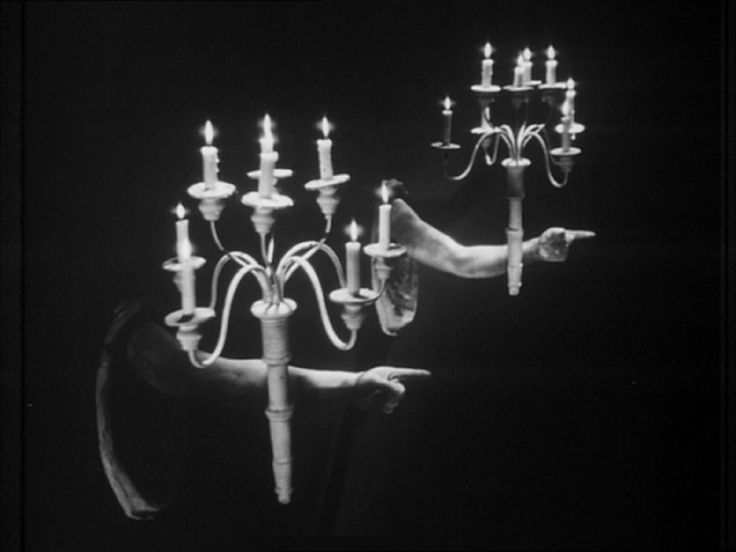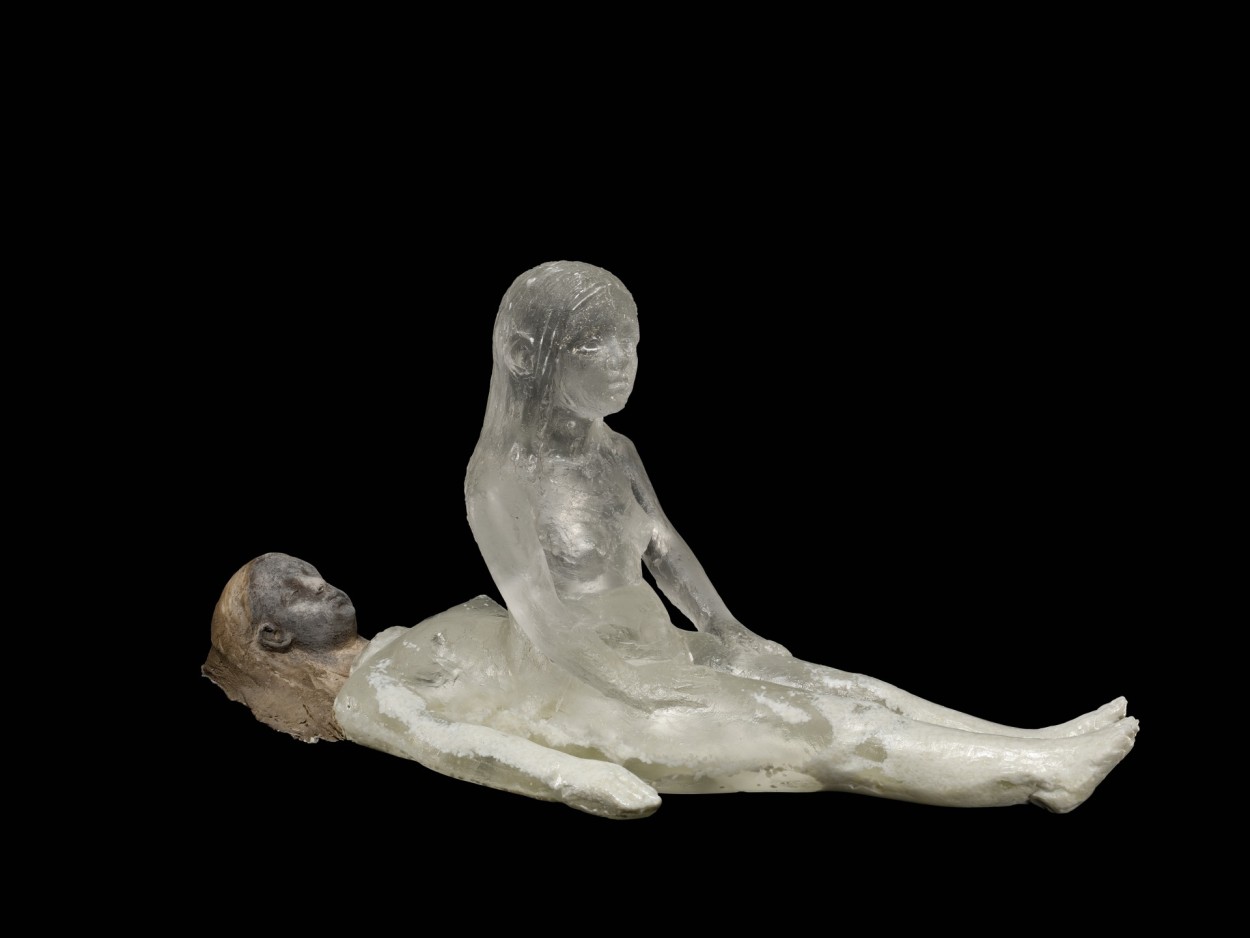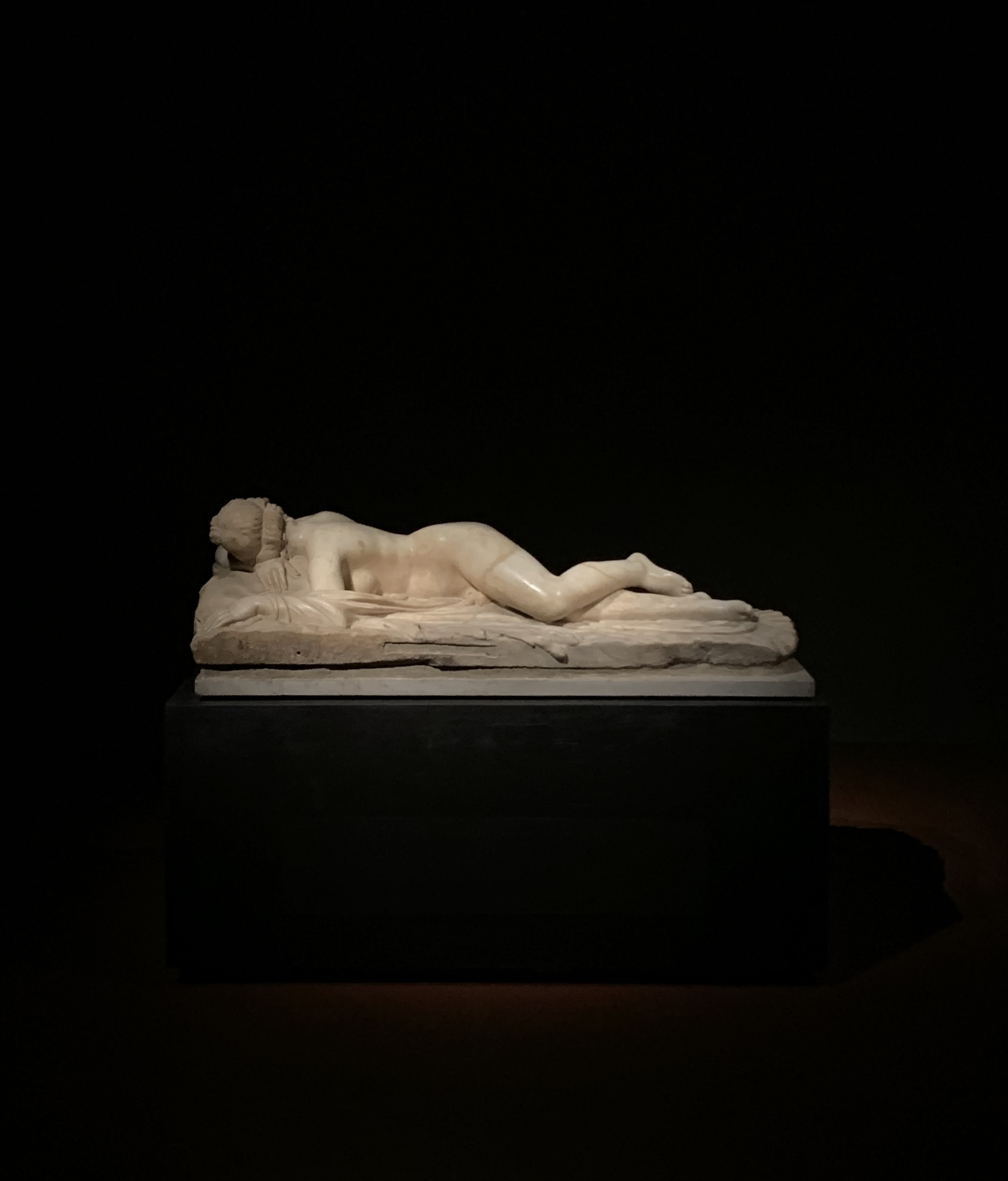IR | Writers Community
Mythology Focus: The Fall of Icarus

Dédale et Icare, 1799
Charles Paul Landon, Alençon, FR
︎ ANNA MAJA SPIESS
Drawn on by his eagerness for the open sky, Icarus left his guide and soared upwards, till he came too close to the blazing sun (...).
Some people say he laughed when he fell.
Movie Focus: Melancholia
Melancholia, 2011
Lars von Trier
︎ ADD TO MY DESK
"I see it coming, I will face it, I will not turn away"
How should we read the film Melancholia, whose visual power and meticulous aesthetics captivate our eyes so? And whose music – the overture from Richard Wagner’s opera Tristan and Iseult – makes our ears tremble with such intense emotion?
The heroine of this film is melancholia – be it Justine’s earthly melancholia, or the cosmic melancholia of Planet Melancholia. Nor can we entirely ignore Lars von Trier’s own melancholic breakdown, which occurred, according to publications, just prior to the filmmaking process. Another complex and interesting relation hides in this film between melancholia and the decline and yearning for desistence, and the ideals of German Romanticism. (...)
Music Focus: Lillies of the Valley

Lillies of the Valley - for Pina Bausch
Jun Miyake, 2008
︎ ADD TO MY DESK
"
Jun Miyake, the Japanese composer, wrote this music for Pina Bausch. Wim Wenders also used the piece, entitled Lilies of the Valley, in a central sequence of his film for and about
Pina
from 2011. Pina Bausch has left us a delicate yet poisonous lily of the valley with her choreography here. (...)
“
CLICK for text source
CLICK for song on Spotify
Movie Focus: La Belle et la Bête

La Belle et la Bete, 1946
Jean Cocteau
︎ ADD TO MY DESK
La Belle et la Bête, directed by Jean Cocteau and with uncredited directing assistance from René Clément, is a dark and lyrical adaptation of the well-known fairy tale by Jeanne-Marie Leprince de Beaumont. Made in 1946 in the immediate aftermath of WWII, the film gave French audiences something they deeply desired: a rich and enticing fantasy, an escape from post-war drudgery.
The film is lauded as one of the most technically impressive of the era but its production was fraught with problems both technical and personal. The crew had to contend with a scarcity of film and a shortage of electricity, often having to work by candlelight.
Cocteau, Clément, and their team succeeded in creating a cinematic jewel, one of those rare films that captures a true sense of enchantment. Cocteau intended for his film to be a realistic rendition of a classic tale, to uplift and inspire an adult audience and give them something to remember what it was like to look at the world with childlike wonder.
Female Artist Focus: Camille Claudel

Camille Claudel, XXXX
Foto: ?
︎ ADD TO MY DESK
Camille Claudel is a french sculptor who was born in 1864 and can be seen as one of the most peculiar female artists with a leading role in their time and beyond.
Much attention has been focused on Claudel’s relationship with Rodin—her teacher, mentor, and lover. By working as Rodin’s apprentice, she had the chance to study the nude figure and anatomy, an unusual opportunity for a woman in the 19th century. By 1893, because of Rodin’s prominence in French culture, Claudel secluded herself in her studio to focus on creating work that would establish her own reputation.
Claudel’s nuanced portrayals of the human form resulted in certain sculptures that the state and press censored as overly sensual and inappropriate. These circumstances may have contributed to her declining career and mental state. In 1913, Claudel was committed to a mental asylum, where she remained until her death 30 years later. Her complex personal drama has brought her scholarly and popular attention, yet her critical acclaim came foremost from her unrivaled ability to convey narrative in marble and bronze sculptures.
Movie recommendation: Camille Claudel, 1987 - Bruno Nuytten
Artwork / Video Focus Installation Focus: Shabah El Rih

Shabah El Rih, Video, 11:00 min
︎ MAR CASTAÑEDO
The Grand Théâtre des Mille et Une Nuits is a historical landmark in the center of Beirut. Built in the late 1920s, it played host to international performances, films and was an icon of contemporary Middle Eastern culture. After the 1975 civil war, the building suffered structural damage and was eventually boardd up and forgotten. There was no attempt to revive the theater until the people’s revolution of 2019, which led to its barriers finally being pulled down.
Song: Wagner’s “Liebestod” from Tristan und Isolde
Watch the video here: CLICK
Performance Focus: Swan Lake/Loch na hEala

Swan Lake/Loch na hEala, 2017
Michael Keegan-Dolan & Teaċ Daṁsa
︎ ADD TO MY DESK
Drawing inspiration from folk tales and one of the most famous classical ballets, Irish choreographer and Sadler’s Wells Associate Artist Michael Keegan-Dolan, presents a piece that combines dance with storytelling and live music in a poetic mix of ancient and modern.
Artwork / Video Focus: The Kiss

The Kiss, 2004
William Cobbing, Video, 3:33 min.
︎ ADD TO MY DESK
Emotion – in this case love -is marvelously expressed in The Kiss, one of two short videos exhibited by William Cobbing. In this work, two people face each other, standing close, their heads totally covered in soft clay. During the course of the film, their hands continuously mould the ‘head’ of their partner: a truly effective metaphor for physical and emotional closeness and the desire for continual adaptation in order to meet the needs of a loved one.
Watch it here: CLICK
Artist Focus: Nicola Samori

Agnese
Nicola Samori, 2009, IT
︎ ADD TO MY DESK
“My works are planes of temporal accumulation and push the image towards its dissolution. My attention is focused on the last moments of a work when a form of exhausted, at-the-limit beauty is impressed in it. I like taking the image to a breaking point, putting its form into danger.”
Nicola Samori’s dark, Baroque-inspired oil paintings are skillful reproductions of classical portraits and still lifes on canvas, wood, or copper, purposefully destroyed to negate classical representation and question painting itself. His process entails “skinning” his painted figures with a palette knife or diluent, layering another image on top, and repeating the process until images fuse and signs of erasure and scratching dominate the reworked surface. Samori explains that exposing the inside of the paint by removing layers of “skin” with a scalpel reveals “a freshness and an intensity unknown in the outer tones.”
Performance Focus: Apollon Musagète

Apollon Musagète
Florentine Holzinger, 2017, Berlin, DE
︎ ADD TO MY DESK
With five muses and the god Apollo, Florentina Holzinger examines attributions of the feminine. What does the perfect woman* want and what does the audience want from her? Apollon Musagète combines fin de siècle freak show with live art of the 1960s to a spectacle of physical virtuosity. The starting point for the piece is Balanchine's 1928 ballet quartet of the same name, which sought to reinvent traditions at the time to the music of Igor Stravinsky. With an aesthetic tightrope walk between occult gym, cyborg bullfight and neoclassical ballet, Holzinger offers a new perspective on choreography and bridges the gap between high art and entertainment. A juxtaposition of fiction and reality, innocence and depravity with an all-female cast.
Sculpture Focus: While You Are Sleeping

While You Are Sleeping
Christina Bothwell, 2007, Heller Gallery, New York, US
︎ FATIMA NJOYA
Colorless and white glass; cast; pit-fired raku ceramic. Sculpture is of a reclining woman who has a "spirit" figure rising from her body. The bodies are made up of white and colorless glass, while the head of the reclining figure is brown and gray ceramic.
Sculpture Focus: The Origin of Sculpture

The Origin of Sculpture, Bronze
Marc Quinn, 2012,
︎ ALICE VAN DANISCH
Marc Quinn expands the material and conceptual possibilities of sculpture. He emerged in the 1990s as part of the iconoclastic group of Young British Artists and is best known for his unusual, organic media: He’s made art from frozen flowers, slides of human DNA, and - in his self-portraits - his own frozen blood. Quinn has also embraced provocative subject matter and made monumental depictions of disabled and transgender subjects. Quinn studied art history at the University of Cambridge and has exhibited in London, New York, Paris, Milan, Seoul, Tokyo, and other cities. His work belongs in the collections of the Tate, the Centre Pompidou, the Stedelijk Museum, the Astrup Fearnley Museum of Modern Art, the Museum of Modern Art, and the Metropolitan Museum of Art.
Artist Focus: Carolina del Pilar

IIKG 1&2
Drawing on black paper, 100 x 70cm. Graphite, charcoal. Berlin, 2020
Carolina del Pilar, 2020, Berlin, DE
︎ ADD TO MY DESK
Carolina del Pilar is an artist based in Berlin with Colombian roots. Her great passion is the study of the sciences and their possible application in artistic work. Her intention is to create works, which challenge the viewer to engage with the work, in terms of space, material and perception, in a dialogue between the viewer and the material..
The art reflects an interest in traditional techniques, symbolism and materials. Through research and experimentation Carolina del Pilar is able to connect and find a language with the material, making it a primary and conceptual part of the work.
She draws in large formats (up to seven metres) with different types of chalk, charcoal and some of its derivatives. These works are the result of a performative overdrawing. This process of physical engagement with the materials leaves visible and audible traces on the paper and the soundtrack. In this way, pulsating macro and microcosms are created in the same image, a game of perception.
Artist Focus: Kiki Smith

Kiki Smith
Born 1954 in Nuremberg is a German-American artist known primarily for her work as a sculptor and printmaker.
︎ ALICE VAN DANISCH
"The body is our common denominator and the stage for our pleasure and our suffering. I want to express through it who we are, how we live and die."
Sculpture Focus: Daphne & Apollo

Daphne & Apollo
Gian Lorenzo Bernini, 1622-1625 Borghese Gallery, Rome, IT
Gian Lorenzo Bernini, 1622-1625 Borghese Gallery, Rome, IT
︎ ADD TO MY DESK
The Greek god Apollo insulted Eros, the god of love, by mocking him as a bad shot. In revenge, Eros shot a golden love arrow at Apollo and a leaden one at the nymph Daphne. The golden arrow caused Apollo to fall in undying love with Daphne. The nymph, however, fled from him, since the leaden arrow had caused exactly the opposite in her. Exhausted by the distress, Daphne asked her father, the river god Peneios, to change her shape, so desired by Apollo. Her wish was granted and she was transformed, before Apollo's eyes, into a laurel tree.
Sculpture Focus: Hermaphrodite

Hermaphrodite
Uffizii Galleries, Florence, IT
︎ ADD TO MY DESK
